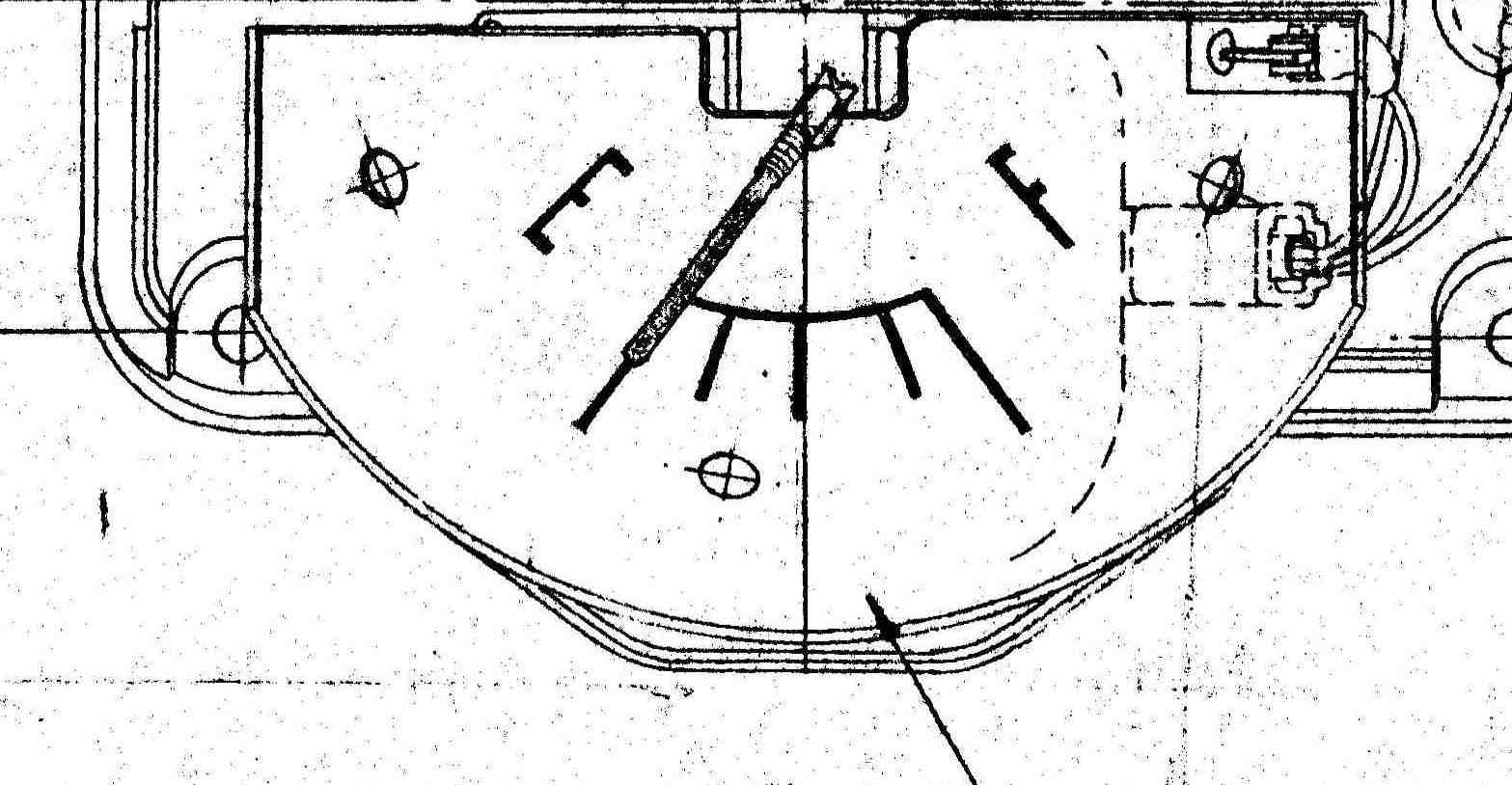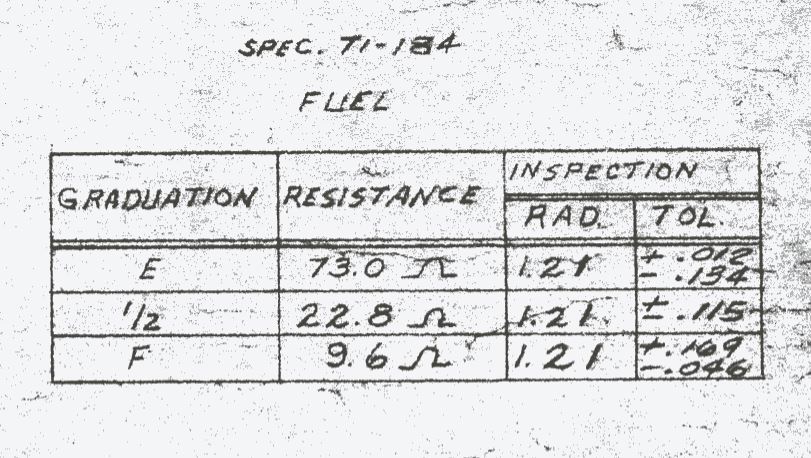66-67 Dodge Charger Source Guide
Fuel Gauge
| Posted by Duane Pankhurst on 08/24/05
Scanned from Stewart Warner Factory Design Drawing |
  |
| Posted by
Don Dodson on 07/28/03
The fuel gauge reacts to the sending unit in the gas tank. The sending unit is a variable resistor (reostat) that goes from 30 ohms when the tank is full to around 80 ohms when empty. The amount of resistance offered to the fuel guage controls the amount of current the fuel guage is subjected to. More current, the needle in the gauge moves more and that movement is toward the full mark. More resistance by the sending unit and less current and the needle moves less of course. Since I have mentioned the gauge reacting to current, then there must be something on the gauge to cause the current to occur, and that is on one lug of the fuel gauge is a terminal where +12 volts is applied and that is a black wire. There are two other terminals on the fuel gauge and one is where +5 volts is picked off that goes to the oil gauge and the temperature gauge, and that wire is a brown wire. The other terminal is where the tank sending unit is attatched and that is a dark blue wire. If you place a jumper wire to the dark blue wire then you will be telling the fuel gauge no resistance and the gauge should then read FULL. Just don't touch the black wire with the ground jumper as that will cause sparks. If the gauge doesn't read full then you might have a bad ground on the fuel gauge and that comes from being mounted in the gauges housing. If the tank reads full with the ground jumper, then that leads to a broken wire or connection coming from the sending unit. Sometimes people fail to connect the ground strap from the sending unit to the gas line back there at the gas tank. The ground strap must be connected to connect the sending unit gas line past the rubber hose that connects to the gas line coming from the fuel pump. Possibly the sending unit is bad and that happens over time as the reostat goes bad and will not offer any reading to the fuel gauge. |
| Posted by Daniel
Daigneault on 07/29/03
With the tank filled, the reading measured between the terminal on the sending unit and its grounding clip should be 10 ohms. With no fuel remaining in the tank, the reading should be 73 ohms. +- 1ohm These readings are @ the sending unit itself in the thank. I personally took off the ground strap and cleaned it properly then put it back on before checking the ohms. If the ground isn't perfect, the gauge will not work properly |